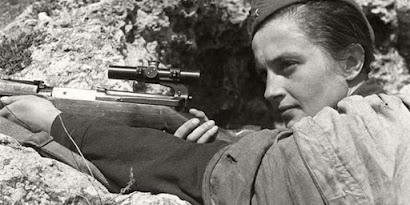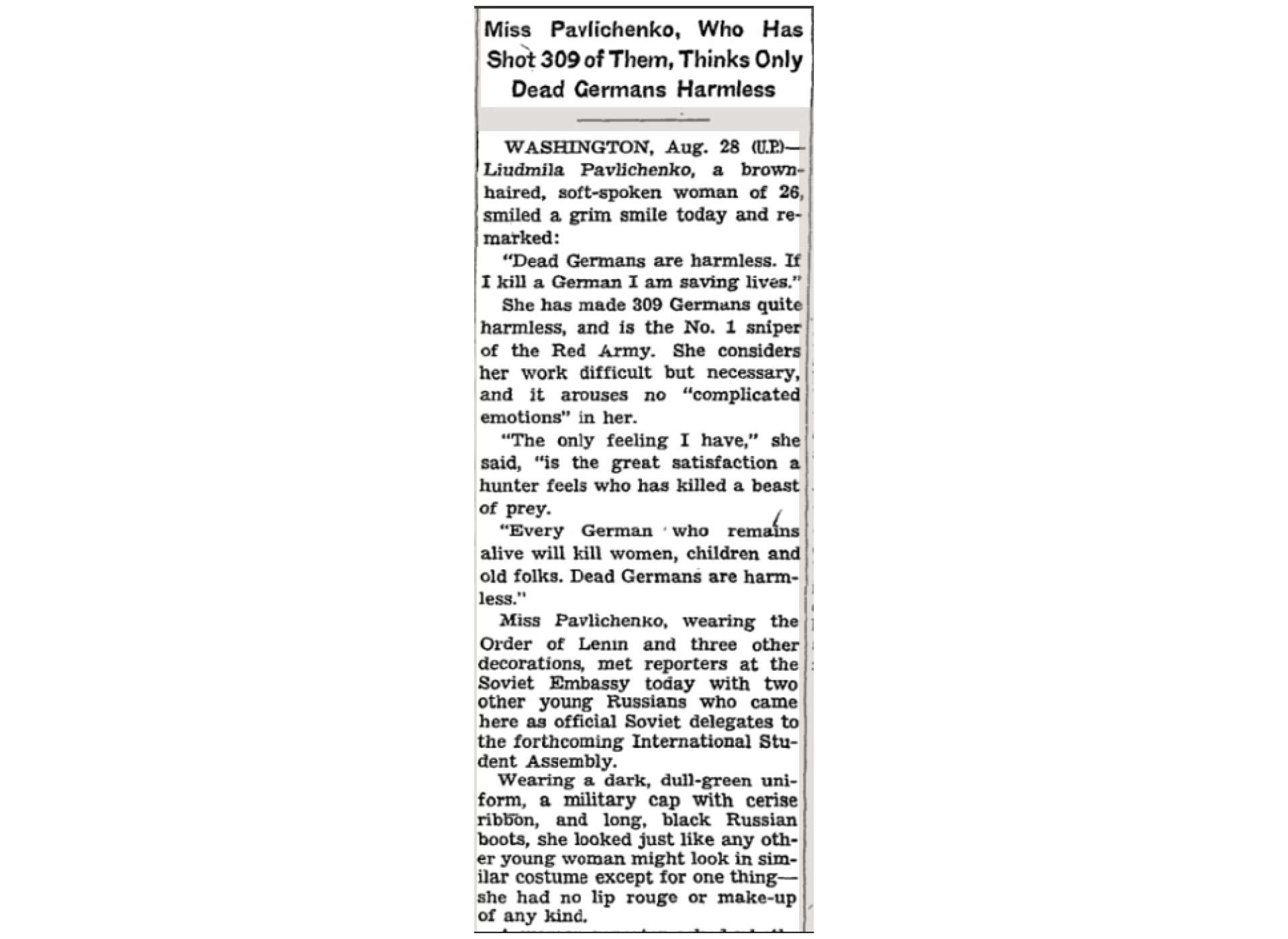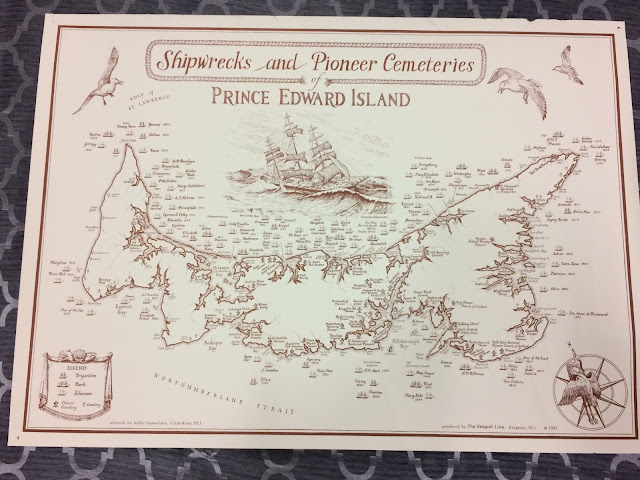"Lady Death" of the Red Army
Based on the current stats of who reads this blog, I think it is safe to say that if I asked you to name some famous snipers you probably wouldn't jump to the Soviet Union.
You may think of Francis Pegahmagabow, an Indigenous sniper in the First World War. Or maybe the longest sniper shot world record - held by a Canadian soldier - at 3,540 metres. You might think of Chris Kyle - the movie American Sniper - you know, the one that had a completely realistic baby - is about him.
But today, we are talking about the "Lady Death" of the Red Army. Lyudmila Pavlichenko.
 |
| Lyudmila Pavlichenko |
Her life began pretty ordinarily. She was born in Belaya Tserkov, a Ukranian city south of Kiev, in 1916. She was competitive, especially against boys. She apparently enjoyed proving girls could be just as good.
When she was 14 years old, she and her family moved to Kiev. She enrolled in a sharpshooting class and earned herself a Voroshilov Sharpshooter Badge. This was a civil decoration, not military, and a marksman certificate.
In 1937, she enrolled at Kiev University, intent on becoming a teacher. She still enjoyed competition and competed on the Kiev University track team and took courses at sniper school - wanting to keep her marksmanship.
In June 1941, Hitler invaded the Soviet Union and like many, she made her way to an enlistment office. Registrars pushed her to enlist as a nurse but she refused, wanting to serve in the infantry. She quickly became a sniper in the Red Army's 25th Rifle Division after taking out two Romanian soldiers digging in a few hundred yards from her position. These two kills are not included in her kills as a sniper.
She participated in the Siege of Odessa, where she was promoted to Senior Sergeant and recorded 187 kills. When the Romanian Army gained control of Odessa in October 1941, her unit retreated to Sevastopol. She served here for eight months. The fighting was intense, costing many Soviets their lives.
In May 1942, she was promoted to Lieutenant, with 257 kills.
The higher her numbers rose, the more dangerous her missions became - including counter sniping and sniper duels. One of her duels lasted three days and obviously, she won every one. It is estimated about 36 of her kills were enemy snipers.
In June 1942 in Sevastopol, she was wounded when shrapnel from a mortar round hit her face. The Red Army saw her as a valuable asset and withdrew her from the battle. By this time, she had 309 confirmed kills.
Germany Tried to Bribe Her - Then Threaten Her
With a nickname like "Lady Death" it's understandable that the German army didn't like being in her sights.
At first, they tried to bribe her, saying things like "come over to us. We will give you plenty of chocolate and make you a German officer."
Obviously, this promise didn't convince her to betray her country, fellow soldiers, or fellow citizens.
By the time of her injury, Germany had switched to threats, such as "If we catch you, we will tear you into 309 pieces and scatter them to the winds!" Apparently when she heard this threat, Pavlichenko was happy to hear the Germans accurately knew her record.
Propaganda
Once she had recovered from her injury, the Soviet Government put her to work in propaganda. And I have to admit, Pavlinchenko was interesting before I learned of this part of her career, but it made me like her even more.
Imagine this: It is late 1942. You are twenty-five years old and have been wounded in battle four times. You are a highly-decorated Soviet Lieutenant, a sniper with 309 confirmed kills, and the nickname "Lady Death".
You are in Washington to try to rally the United States to try to gain more support, and hopefully American boots on the ground in Europe. Your fellow Soviet soldiers and citizens are dying as the Germans push further into your country. A second Eastern Front would divide Hitler's forces. You are the first Soviet citizen to be welcomed at the White House. Here, you meet First Lady Eleanor Roosevelt who asks you to join her on a tour of the United States and speak to Americans about her experiences as a woman in combat.
 |
| Associate Justice Robert Jackson, Pavlichenko, and First Lady Eleanor Roosevelt. Image originally from Library of Congress. |
Seems like a great way to get your message out and make sure the Americans are truly aware of what is happening in your country. This was the situation Pavlichenko found herself in. At first, I'm sure it may have sounded promising.
Despite her record, accomplishments, and message, despite talking in front of thousands of Americans, I will give you three guesses on what the American Press found more interesting.
If you guessed her appearance you would be correct.
 |
| Snippet from a New York Times article. It isn't too bad until you get to the last section. |
Articles tended to focus on her style and lack of make-up. The New York Times called her "Girl Sniper" and other press articles claimed her long uniform skirt "lacked style"- one reporter even told her women in America wore shorter skirts and her long olive green skirt made her look fat.
Another reporter asked if women were allowed to wear make-up on the front lines. Pavlinchenko confirmed there were no rules against wearing make-up but asked "Who had time to think of her shiny nose when there is a battle going on?"
In New York, the Mayor, Fiorello LaGuardia, and a representative of the International Fur and Leather Works Union, greeted her and presented her with a beautiful fur coat. A New York paper claimed the beautiful coat would be perfect for going to the opera, but that by giving the coat to Pavlichenko it would likely "go to the wars on Russia's bloody steps when Lyudmila Pavlichenko returns to her homeland."
It wasn't long before she had enough of the American press commenting on her looks. When talking to Time magazine, she said:
"I wear my uniform with honor. It has the Order of Lenin on it. It has been covered with blood in battle. It is plain to see that with American women what is important is whether they wear silk underwear under their uniforms. What the uniform stands for, they have yet to learn."
Despite this clear statement, and reprimand, some reporters still didn't get it. One of those reporters was Malvina Lindsey. Lindsey wrote "The Gentler Sex" column for the Washington Post, and just couldn't understand why Pavlichenko didn't put more effort into her style. The fact that Pavlichenko was a soldier with more important things to worry about apparently didn't make any sense to Lindsey, who claimed, "Isn't it a part of military philosophy that an efficient warrior takes pride in his appearance? Isn't Joan of Arc always pictured in beautiful and shining armor?"
As she travelled, Pavlichenko was a powerful presence. At a rally in Chicago, she said to the crowd,
"Gentlemen, I am 25 years old and I have killed 309 fascist occupants by now. Don't you think, gentlemen, that you have been hiding behind my back for too long?"
She also spoke in Canada and Britain about how a second Eastern Front was needed. But, they would have to wait two more years, for the invasion of Normandy before that would happen as Canada and Britain were occupied with the Western Front.
When she returned to the Soviet Union, she was promoted to Major and given the title "Hero of the Soviet Union" - the highest Soviet Union military distinction. She also received the highest civilian designation, the Order of Lenin, twice.
Pavlichenko never returned to combat and trained other Soviet snipers until 1945. After the war, she returned to Kiev University, completed her studies, and became a historian.
Like many, she suffered from PTSD and depression after the war. She died October 10, 1974. In 1976, a commemorative stamp was issued in her honour. This was the second stamp printed in her honour. The first was in 1943.
The Red Army had 2,000 female snipers in the Second World War. Only 500 survived.
Sources:
Gentry, Connie. ""Lady Death" of the Red Army: Lyudmila Pavlichenko." The National WWII Museum: New Orleans. March 22, 2021. https://www.nationalww2museum.org/war/articles/lady-death-red-army-lyudmila-pavlichenko
King, Gilbert. "Eleanor Roosevelt and the Soviet Sniper." Smithsonian Magazine. February 21, 2013. https://www.smithsonianmag.com/history/eleanor-roosevelt-and-the-soviet-sniper-23585278/
"Lyudmila Pavlichenko 'Lady Death' : History's Deadliest Female Sniper." History. https://www.nationalww2museum.org/war/articles/lady-death-red-army-lyudmila-pavlichenko



Comments
Post a Comment